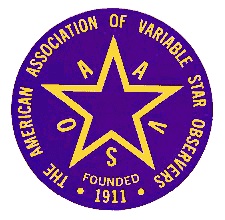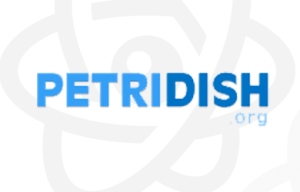Citizen engagement is essential to our fast-changing civilization. Politics could certainly use more empowerment of common citizens. So could innovative commerce, and even national defense relies on a robust citizenry. But one area with especially bright prospects, is crowd-sourced -- or individual participation in -- inventiveness and science.
 It's a topic I've discussed many times. As a teenager, growing up in Los Angeles, I participated in the American Association of Variable Star Observers (AAVSO), gathering mountains of data for professional astronomers, one of countless such groups that you might learn about via the Society of Amateur Scientists. In my new novel Existence, I portray this trend accelerating as individuals and small groups become ever more agile at sleuthing, data collection and analysis -- forming very very smart, ad-hoc, problem-solving "smart mobs." But even in the months since that book was published, reality seems to be catching up with fiction.
It's a topic I've discussed many times. As a teenager, growing up in Los Angeles, I participated in the American Association of Variable Star Observers (AAVSO), gathering mountains of data for professional astronomers, one of countless such groups that you might learn about via the Society of Amateur Scientists. In my new novel Existence, I portray this trend accelerating as individuals and small groups become ever more agile at sleuthing, data collection and analysis -- forming very very smart, ad-hoc, problem-solving "smart mobs." But even in the months since that book was published, reality seems to be catching up with fiction.
 For example, as funding dollars for science are increasingly under threat, a number of groups are offering opportunities for crowd-funded basic research, enabling citizens to interact directly with teams at the cutting edge of some topic. Envision a kind of KickStarter for science research. Dr. Jai Ranganathan, co-founder of the SciFund Challenge, asks "What would this world look like if every scientist touched a thousand people each year with their science message? How would science-related policy decisions be different if every citizen had a scientist that they personally knew? One thing is for sure: a world with closer connections between scientists and the public would be a better world. And crowdfunding might just help to get us there."
For example, as funding dollars for science are increasingly under threat, a number of groups are offering opportunities for crowd-funded basic research, enabling citizens to interact directly with teams at the cutting edge of some topic. Envision a kind of KickStarter for science research. Dr. Jai Ranganathan, co-founder of the SciFund Challenge, asks "What would this world look like if every scientist touched a thousand people each year with their science message? How would science-related policy decisions be different if every citizen had a scientist that they personally knew? One thing is for sure: a world with closer connections between scientists and the public would be a better world. And crowdfunding might just help to get us there."
 Backers receive periodic updates on their chosen projects and direct communication with researchers. They may also receive souvenirs, acknowledgment in journal articles, invitations to private seminars, visits to laboratories or field sites, and occasionally, naming rights to new discoveries or species. One advantage to researchers is that they can receive funding in a matter of weeks, rather than months.
Backers receive periodic updates on their chosen projects and direct communication with researchers. They may also receive souvenirs, acknowledgment in journal articles, invitations to private seminars, visits to laboratories or field sites, and occasionally, naming rights to new discoveries or species. One advantage to researchers is that they can receive funding in a matter of weeks, rather than months.
 Current projects on the science funding site Petridish include: saving the Samaki fish in the world’s largest desert lake, monitoring glacial lakes, and tracking sharks with satellites. Or on Microryza, you can contribute to tracking Magellenic Penguins, or exploring the stability of neural networks. iAMscientist offers opportunities as diverse as monitoring Diamondback Terrapins with new tracking technologies, and robotic hand rehabilitation for stroke victims. Recent projects on RocketHub's SciFund Challenge include projects to identify new drug candidates to treat Alzheimer's disease, developing artificial photosynthesis, or saving stressed coral reefs on Kiribati. Or you can donate to specific projects, such as LiftPort, which seeks to build a space elevator.
Current projects on the science funding site Petridish include: saving the Samaki fish in the world’s largest desert lake, monitoring glacial lakes, and tracking sharks with satellites. Or on Microryza, you can contribute to tracking Magellenic Penguins, or exploring the stability of neural networks. iAMscientist offers opportunities as diverse as monitoring Diamondback Terrapins with new tracking technologies, and robotic hand rehabilitation for stroke victims. Recent projects on RocketHub's SciFund Challenge include projects to identify new drug candidates to treat Alzheimer's disease, developing artificial photosynthesis, or saving stressed coral reefs on Kiribati. Or you can donate to specific projects, such as LiftPort, which seeks to build a space elevator.
![zooniverse[7] zooniverse[7]](http://davidbrin.files.wordpress.com/2012/09/zooniverse7.jpg?w=300) If you're looking for more active involvement in research projects, you might try SciStarter, Scientific American's Citizen Science, or Zooniverse, which offers a compilation of projects for citizen involvement, such as studying how solar storms affect conditions on earth at Solar Stormwatch and identifying exoplanets at PlanetHunters. Volunteers can help classify galaxies at Galaxy Zoo, learn to map retinal connections at EyeWire, map the age of Lunar rocks with MoonZoo, or analyze extraterrestrial signals with SETILive. You can donate your home computer's processing power to SETI@Home to help analyze data from radio telescopes such as Arecibo.
If you're looking for more active involvement in research projects, you might try SciStarter, Scientific American's Citizen Science, or Zooniverse, which offers a compilation of projects for citizen involvement, such as studying how solar storms affect conditions on earth at Solar Stormwatch and identifying exoplanets at PlanetHunters. Volunteers can help classify galaxies at Galaxy Zoo, learn to map retinal connections at EyeWire, map the age of Lunar rocks with MoonZoo, or analyze extraterrestrial signals with SETILive. You can donate your home computer's processing power to SETI@Home to help analyze data from radio telescopes such as Arecibo.
 Indeed, one worthy project that could help in the search for extraterrestrial intelligence more effectively than the sadly obsolete program at the Seti Institute would be to re-ignite Project Argus, the alternative endeavor of the Seti League, that envisions setting up 5000 radio telescopes in back yards across the planet, keeping the entire sky under observation, all the time, instead of peering through a super-narrow soda straw at distant specks of space, one at a time. A system far more likely to catch the rare blip of an alien race "pinging" us, which recent calculations show to be more plausible than the imagined tutorial "beacons." In any event, this is where one millionaire could help thousands of eager (and tech savvy) amateurs to become key members of a worldwide smart mob, hunting ol' ET down!
Indeed, one worthy project that could help in the search for extraterrestrial intelligence more effectively than the sadly obsolete program at the Seti Institute would be to re-ignite Project Argus, the alternative endeavor of the Seti League, that envisions setting up 5000 radio telescopes in back yards across the planet, keeping the entire sky under observation, all the time, instead of peering through a super-narrow soda straw at distant specks of space, one at a time. A system far more likely to catch the rare blip of an alien race "pinging" us, which recent calculations show to be more plausible than the imagined tutorial "beacons." In any event, this is where one millionaire could help thousands of eager (and tech savvy) amateurs to become key members of a worldwide smart mob, hunting ol' ET down!
 Citizens have long participated in regional bird counts, as well as monitoring butterfly migration, wildlife, and local water quality. Technology has enabled high quality data collection and recording tools to be widely available to amateurs. You can even do science without leaving your home...the online game Foldit allows gamers to compete to fold protein structures to achieve the best scoring (lowest energy) configuration.
Citizens have long participated in regional bird counts, as well as monitoring butterfly migration, wildlife, and local water quality. Technology has enabled high quality data collection and recording tools to be widely available to amateurs. You can even do science without leaving your home...the online game Foldit allows gamers to compete to fold protein structures to achieve the best scoring (lowest energy) configuration.
Whatever your level of involvement, you can have the satisfaction of participating in humanity's greatest endeavor. In an era when political factions and media empires are waging relentless "war on science" this trend toward active participation -- or providing some financial support -- is the surest way to help support an active, vigorous, future hungry and scientific civilization.
==Crowd Sourcing Ideas and Innovation! ==
Then there's tinkering and creating new products, new services, the sort of thing that Adam Smith (and anyone with sense) proclaimed as the heart and soul of productive enterprise. Sure, good things have happened to help stimulate creativity. Patent law was (believe it or not) a huge advance over what came before. Venture capitalists tend to have the imagination of Galapagos finches, but they, too, were somewhat of a step forward. Only, now, as we finally creep out of the dullard doldrums of the Naughty Oughts, there arrive dozens of new approaches that may do a lot of good, stimulating our creative juices.
 Unused inventions get crowd-sourced spark: Marblar is the latest in a string of “open innovation” sites that attempt, in one way or another, to encourage inventiveness online. It does this by crowdsourcing a simple request:find new uses for under-exploited patents.
Unused inventions get crowd-sourced spark: Marblar is the latest in a string of “open innovation” sites that attempt, in one way or another, to encourage inventiveness online. It does this by crowdsourcing a simple request:find new uses for under-exploited patents.
 Related endeavors? ArticleOne asks its community of users to find “prior art” – published documents that show an invention existed before it was patented – to quash patents that firms have been accused of infringing. (It also helps good/original patents to thrive!)
Related endeavors? ArticleOne asks its community of users to find “prior art” – published documents that show an invention existed before it was patented – to quash patents that firms have been accused of infringing. (It also helps good/original patents to thrive!)
Or take: Innocentive, where companies and NGOs present problems that they feel need solving – such as how to develop a portable rainwater storage system for the developing world. On the flipside, IBridgeNetwork and Yet2.com post university and corporate research in a bid to find people who’ll license their technology to commercialize it.
== Then build it! ==
And the Maker Trend will enable widespread innovation, as mini-factories become ever more accessible! Read about new companies that will bring 3D printing to the home. Letting you take a downloaded or self-made template and order up a physical version. Even a sculpture made from your head-scan. Commercial 3-D printing works with only a few dozen types of materials, mostly metals and plastics, but more are in the works. Researchers are experimenting with exotic “inks” that range from wood pulp to sugar. (And stem cells! But that's a different story...) Some devices can extrude liquid foods, like icing and melted chocolate. Soon we’ll be able to print everything from birthday cakes to electric circuits, potentially making complex electronics from scratch.
"When 3-D printers make an object, they use an “additive” technology, which is to say they build objects layer by layer from the bottom up. (By contrast, other computer-controlled machines, such as the CNC router and CNC mill, are “subtractive”; they use a spinning tool to cut or grind away material.)"
==Programming for Everyone==
 While we’re on the burgeoning topic of crowd-sourcing… Inform the world about Raspberry Pi! Can a $35 computer persuade kids to put down their smartphones and try their hands at programming? Or at least explore the guts that make things work? Another part of the new Maker Movemen.
While we’re on the burgeoning topic of crowd-sourcing… Inform the world about Raspberry Pi! Can a $35 computer persuade kids to put down their smartphones and try their hands at programming? Or at least explore the guts that make things work? Another part of the new Maker Movemen.
Long before I keynoted a recent Maker Faire, I was trying to throw incendiaries about this matter. For example in the Salon Magazine article “Why Johnny Can’t Code,” which complained about the lack of a common – very basic – programming language in all computers. Something simple, reliable and universal -- remember when ALL "home" computers had such a lingua franca language that all kids could fool with? One so common that textbook publishers used to include try-it-at-home exercises in all the math and science books. Yes that language sucked. But millions of kids got a taste of what made the pixel move -- (an algorithm!) -- and that does not happen anymore. (Incidentally, that article brought me more hate mail than even my pieces dissing Star wars!)
Perhaps Raspberry Pi will help to change that, yet again.Tomorrow’s kids may know more about the “guts” of their technological world than the video-game generation does. In part thanks to great efforts like this.
== And finally... a random science thought==
 On the subject of crowd-sourcing, consider: Is science a one-man enterprise? Diametrically opposite to fantasy's romantic images of wizards, the best scientists publish and share as quickly as they can. And even when they have towering egos, they know they aren't doing it alone. The Poster Boy is a good example. Galileo is credited with a number of discoveries during the Gosh-Wow-Look! era of astronomy. Yet very few were uniquely his. As one member of my blogmunity commented recently: "Marius concluded that Jupiter had moons one day later than Galileo. David Fabricius published a pamphlet several months before Scheiner made his meticulously documented series of observations, which in turn was a month or two ahead of Galileo. Harriot as usual was ahead of everyone, and as usual never published. Sure, he deserved attention as the sun around which science revolved in his era....But take Galileo out of the equation, and all the same discoveries are made. We'd be talking about Scheiner's sunspots, Fabricius' lunar mountains, Marius' moons of Jupiter, or Lembo's phases of Venus!"
On the subject of crowd-sourcing, consider: Is science a one-man enterprise? Diametrically opposite to fantasy's romantic images of wizards, the best scientists publish and share as quickly as they can. And even when they have towering egos, they know they aren't doing it alone. The Poster Boy is a good example. Galileo is credited with a number of discoveries during the Gosh-Wow-Look! era of astronomy. Yet very few were uniquely his. As one member of my blogmunity commented recently: "Marius concluded that Jupiter had moons one day later than Galileo. David Fabricius published a pamphlet several months before Scheiner made his meticulously documented series of observations, which in turn was a month or two ahead of Galileo. Harriot as usual was ahead of everyone, and as usual never published. Sure, he deserved attention as the sun around which science revolved in his era....But take Galileo out of the equation, and all the same discoveries are made. We'd be talking about Scheiner's sunspots, Fabricius' lunar mountains, Marius' moons of Jupiter, or Lembo's phases of Venus!"



Comments